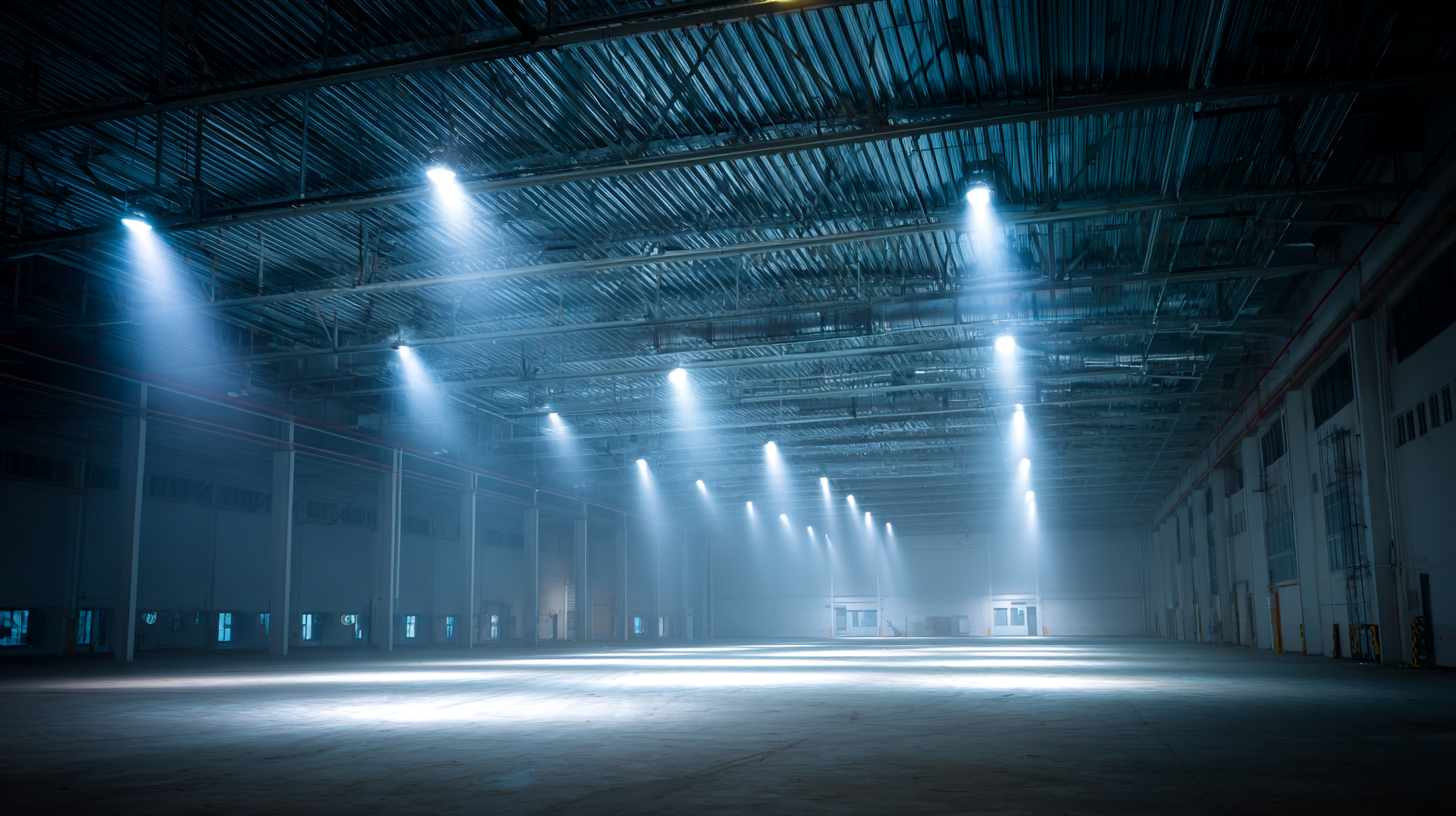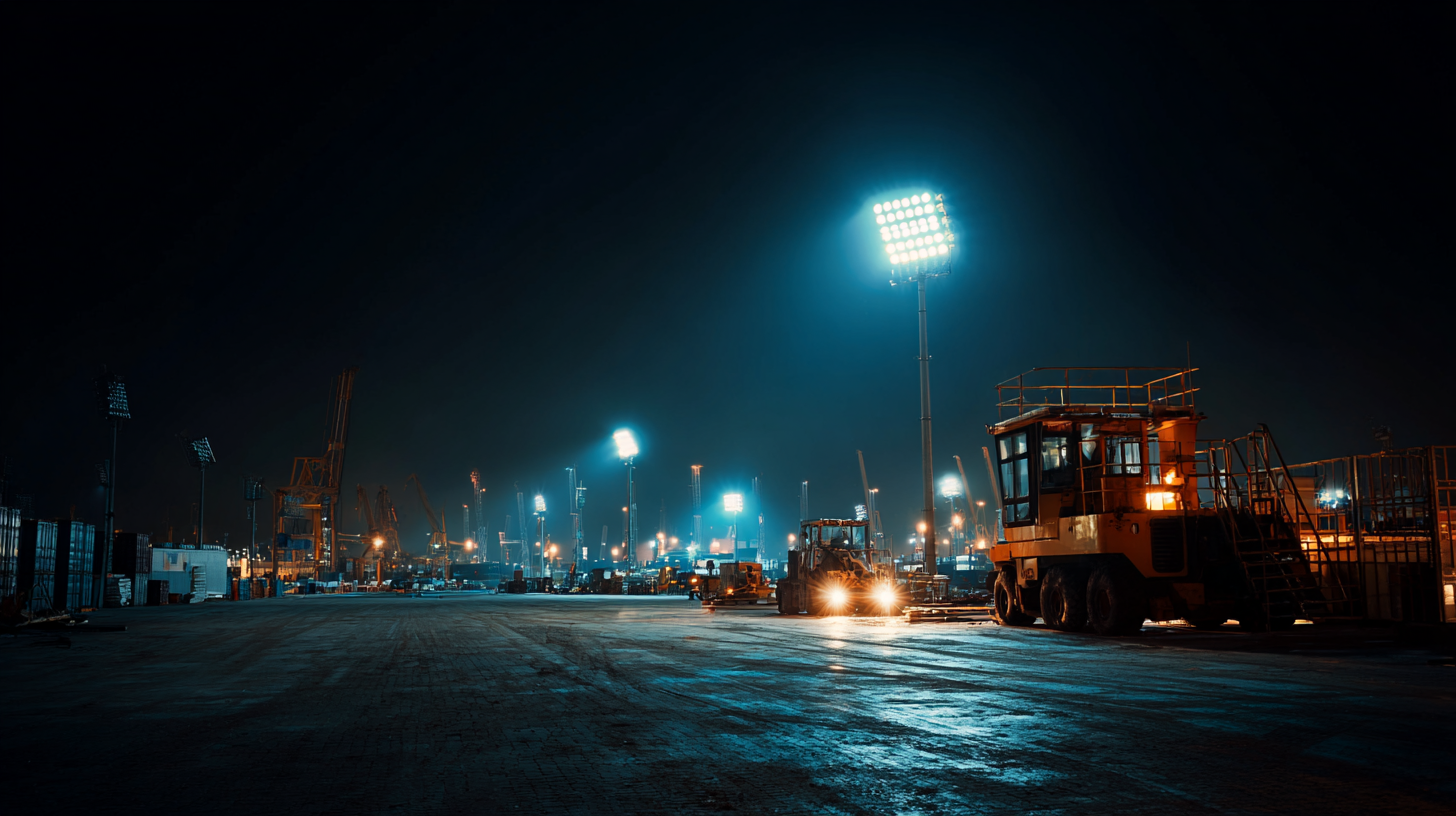
In today's rapidly evolving industrial landscape, the selection of the right lighting solutions is crucial for optimizing efficiency and safety in various global projects. Industrial Led Flood Lights have emerged as a game-changer, offering unparalleled brightness, energy efficiency, and durability to meet the demanding needs of factories and construction sites worldwide. As businesses increasingly seek reliable partners in China, known for its robust manufacturing capabilities, understanding the key features and benefits of these lighting solutions becomes essential. This guide will delve into the critical factors that influence the selection of Industrial Led Flood Lights, equipping you with the knowledge needed to make informed decisions that will enhance productivity and reduce costs in your international ventures. Whether you’re a project manager, an operations director, or involved in procurement, this comprehensive overview will serve as a valuable resource in navigating the complex landscape of industrial lighting solutions.

When selecting the best industrial LED flood lights for global projects, various key metrics should be taken into consideration to ensure optimal performance and energy efficiency. One of the most critical factors is lumen output, which significantly influences visibility. According to the Illuminating Engineering Society (IES), a typical industrial floodlight should ideally deliver between 10,000 to 100,000 lumens depending on application requirements. This ensures that work areas remain illuminated, enhancing both safety and productivity.
Another vital metric is the color temperature of the lights, typically measured in Kelvin (K). Most industrial settings benefit from a color temperature range of 5000K to 6500K, mimicking daylight and providing a better visual experience. It has been reported that adequate color rendering can increase worker alertness, enhancing performance metrics by as much as 30%.
**Tips:** Always check the IP rating of the flood lights; an IP65 or higher rating is preferred for outdoor installations to withstand dust and moisture. Additionally, consider energy efficiency ratings such as the LM-79 and LM-80, which can help you choose products that lower operational costs while ensuring compliance with international standards.
When it comes to industrial LED flood lights, understanding their lifetime and efficiency is critical for making informed decisions in your global projects.
LED technology has revolutionized outdoor lighting, offering significantly longer lifespans compared to traditional lighting options. Typically, quality LED flood lights can last anywhere from 25,000 to 50,000 hours, depending on usage and environmental conditions.
This durability not only reduces the frequency of replacements but also lowers maintenance costs, making LEDs a cost-effective solution in the long run.
Efficiency is another vital factor that impacts the performance of LED flood lights. Measured in lumens per watt, the efficiency of these lights determines how much light they produce for each watt of energy consumed.
High-efficiency LEDs can produce upwards of 130 lumens per watt, translating to brighter illumination while consuming less power.
This efficiency not only contributes to lower energy bills but also supports sustainable practices by reducing overall energy consumption.
For global projects, where energy resources and costs can vary drastically, selecting LED flood lights with optimal lifetime and efficiency can make a significant difference in both functionality and environmental impact.
When selecting industrial LED flood lights for global projects, understanding the importance of lumens and wattage is essential for accurate brightness measurement. Lumens measure the total amount of visible light emitted by a source, while wattage indicates the energy consumed. Research by the U.S. Department of Energy reveals that LED fixtures provide a remarkable illumination efficiency, producing about 100 lumens per watt, compared to traditional halogen lights that produce only about 20 lumens per watt. This efficiency not only enhances visibility but also significantly reduces energy costs.
To accurately assess the brightness required for your space, consider the application and the environment. According to a report by the Illuminating Engineering Society, the recommended light levels for outdoor industrial areas typically range from 10 to 50 foot-candles, depending on the activity performed. For instance, areas requiring high visibility, such as loading docks or vehicle maintenance zones, benefit from higher lumen outputs. Thus, when sourcing your industrial LED flood lights, prioritize those that balance lumens and wattage effectively to achieve optimal lighting solutions tailored to your project's unique needs.
| Model | Lumens | Wattage | Efficacy (Lumens/Watt) | Beam Angle |
|---|---|---|---|---|
| Model A | 20,000 | 150 | 133.33 | 120° |
| Model B | 25,000 | 200 | 125.00 | 90° |
| Model C | 15,000 | 100 | 150.00 | 110° |
| Model D | 30,000 | 250 | 120.00 | 75° |
When evaluating the return on investment (ROI) for industrial LED flood lights in global projects, it’s crucial to consider both the initial costs and the long-term savings they offer. While the upfront price of LED technology may be higher than traditional lighting options, the energy efficiency of LEDs can result in significant cost reductions over time. LEDs consume less power and have longer lifespans, often exceeding 50,000 hours, which translates to fewer replacements and lower maintenance expenses. This makes them an economically savvy choice for projects spread over vast areas or those requiring consistent lighting.
Moreover, conducting a cost-benefit analysis should also factor in additional benefits such as improved safety and productivity. Better illumination provided by LED flood lights can enhance workplace safety, reducing accidents and ensuring compliance with safety regulations. This not only protects workers but can also minimize liability costs for companies. By evaluating both quantifiable savings and qualitative improvements, organizations can make well-informed decisions that align with their project goals while maximizing financial viability in the long run.

When selecting industrial LED flood lights for global projects, understanding regulatory standards and certifications is paramount to ensure compliance and enhance safety across various jurisdictions. Organizations must navigate a complex landscape of local and international regulations that govern lighting solutions, such as the IEC 60598 standard and the DOE's Energy Conservation Standards in the United States. According to a report by the International Energy Agency (IEA), lighting accounts for about 15% of global electricity consumption, highlighting the need for compliance with energy efficiency standards to reduce energy use in industrial settings.

Certification from recognized bodies, such as the Underwriters Laboratories (UL) and the European Conformity (CE) mark, is critical for verifying that products meet safety and performance standards. A recent market analysis indicated that LED lighting solutions with appropriate certifications are expected to grow by 12% annually, driven by increased awareness of energy efficiency and regulatory compliance. Compliance with these standards not only mitigates legal risks but also promotes environmental sustainability and enhances the overall reliability of lighting solutions used in demanding industrial environments.
Let us help you get started with our superior LED lighting products.
Get all the latest news from BrightLED.
Copyright © Bright LED. All rights reserved.
STAY CONNECTED

